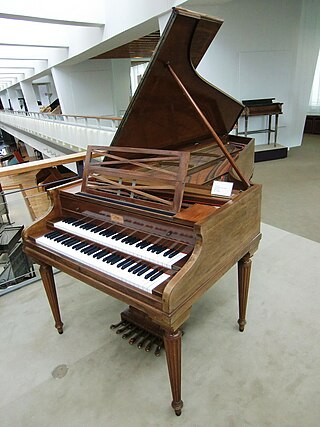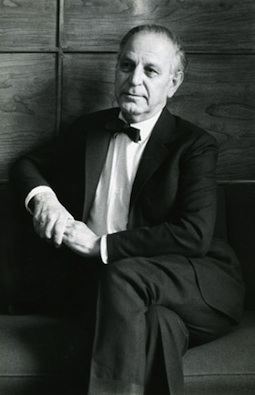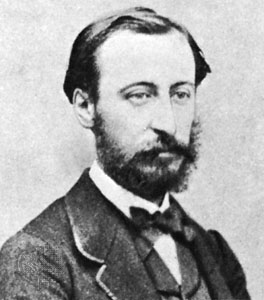History
An aubade is a morning courting song, vs. a serenade in the evening. Here the action begins one morning, and ends the next day at dawn. Poulenc's work was originally conceived as ballet music, but is today regarded as a piano concerto. The work was premiered as a ballet on 18 June 1929 at the Noailles, which determined the size of the orchestra Poulenc could employ. The choreographer was Bronislava Nijinska. A few months later, it was revived at the Théâtre des Champs-Élysées in the choreography this time by George Balanchine, of which Poulenc disapproved.
Poulenc himself designed the scenario of the ballet whose theme is the solitude of women. The goddess Diana is the heroine. The action begins in a clearing. Diana's companions awaken little by little. Diana enters the scene, tormented by the chastity imposed on her. Her companions dress her then give her a bow: the hunt must serve her as a distraction. A solo of Diana follows, before she rejects the bow and goes into the forest, desperate. Her companions try to console her, but Diana goes hunting, alone. Her companions fall asleep.

A string orchestra is an orchestra consisting solely of a string section made up of the bowed strings used in Western Classical music. The instruments of such an orchestra are most often the following: the violin, which is divided into first and second violin players, the viola, the cello, and usually, but not always, the double bass.

Concert champêtre, FP 49, is a harpsichord concerto by Francis Poulenc, which also exists in a version for piano solo with very slight changes in the solo part.

An aubade is a morning love song, or a song or poem about lovers separating at dawn. It has also been defined as "a song or instrumental composition concerning, accompanying, or evoking daybreak".

Pulcinella is a 21-section ballet by Igor Stravinsky with arias for soprano, tenor and bass vocal soloists, and two sung trios. It is based on the 18th-century play Quatre Polichinelles semblables, or Four similar Pulcinellas, revolving around a stock character from commedia dell'arte. The work premiered at the Paris Opera on 15 May 1920 under the baton of Ernest Ansermet. The central dancer, Léonide Massine, created both the libretto and the choreography, while Pablo Picasso designed the costumes and sets. The ballet was commissioned by Sergei Diaghilev, impresario of the Ballets Russes. A complete performance takes 35–40 minutes. Stravinsky revised the score in 1965.

Mendelssohn's Piano Concerto No. 1 in G minor, Op. 25, was written in 1830–31, around the same time as his fourth symphony ("Italian"), and premiered in Munich on 17 October 1831. This concerto was composed in Rome during a travel in Italy after the composer met the pianist Delphine von Schauroth in Munich. The concerto was dedicated to her. Mendelssohn attended one party after another in Munich in October 1831, the month of the premiere, but he also played chamber music and taught double counterpoint. He performed the piece himself at the premiere, which also included performances of his Symphony No. 1 and the Overture from Midsummer Night's Dream. He had already written a piano concerto in A minor with string accompaniment (1822) and two concertos with two pianos (1823–24).
Jean René Désiré Françaix was a French neoclassical composer, pianist, and orchestrator, known for his prolific output and vibrant style.

Ulvi Cemal Erkin was a member of the pioneer group of symphonic composers in Turkey, born in the period 1904–1910, who later came to be called The Turkish Five. These composers set out the direction of music in the newly established Turkish Republic. These composers distinguished themselves with their use of Turkish folk music and modal elements in an entirely Western symphonic style.

The Piano Concerto No. 4 in C minor, Op. 44 was composed by Camille Saint-Saëns in 1875. It was premièred on October 31, 1875, at the Théâtre du Châtelet of Paris, with the composer as the soloist. The concerto is dedicated to Anton Door, a professor of piano at the Vienna Conservatory.
The Capriccio for Piano and Orchestra was written by Igor Stravinsky in Nice between 1926 and 1929. The score was revised in 1949.
An organ concerto is an orchestral piece of music in which a pipe organ soloist is accompanied by an an orchestra, although some works exist with the name "concerto" which are for organ alone.
The Creatures of Prometheus, Op. 43, is a ballet composed in 1801 by Ludwig van Beethoven following the libretto of Salvatore Viganò. The ballet premiered on 28 March 1801 at the Burgtheater in Vienna and was given 28 performances. It was premiered in New York at the Park Theatre on 14 June 1808 being one of the first full length works by Beethoven to be performed in the United States. It is the only full length ballet by Beethoven.

The Piano Quartet No. 1 in G minor, Op. 25, was composed by Johannes Brahms between 1856 and 1861. It was premiered in 1861 in Hamburg, with Clara Schumann at the piano. It was also played in Vienna on 16 November 1862, with Brahms himself at the piano supported by members of the Hellmesberger Quartet. Like most piano quartets, it is scored for piano, violin, viola, and cello.
The Concerto pour orgue, cordes et timbales in G minor, FP 93, is an organ concerto composed by Francis Poulenc between 1934 and 1938. It has become one of the most frequently performed pieces of the genre not written in the Baroque period.

The Twelve Grand Concertos, Op. 6, HWV 319–330, by George Frideric Handel are concerti grossi for a concertino trio of two violins and cello and a ripieno four-part string orchestra with harpsichord continuo. First published by subscription in London by John Walsh in 1739, they became in a second edition two years later Handel's Opus 6. Taking the older concerto da chiesa and concerto da camera of Arcangelo Corelli as models, rather than the later three-movement Venetian concerto of Antonio Vivaldi favoured by Johann Sebastian Bach, they were written to be played during performances of Handel's oratorios and odes. Despite the conventional model, Handel incorporated in the movements the full range of his compositional styles, including trio sonatas, operatic arias, French overtures, Italian sinfonias, airs, fugues, themes and variations and a variety of dances. The concertos were largely composed of new material: they are amongst the finest examples in the genre of baroque concerto grosso.
The Musette, or rather chaconne, in this Concerto, was always in favour with the composer himself, as well as the public; for I well remember that HANDEL frequently introduced it between the parts of his Oratorios, both before and after publication. Indeed no instrumental composition that I have ever heard during the long favour of this, seemed to me more grateful and pleasing, particularly, in subject.
Francis Poulenc's Concerto pour deux pianos in D minor, FP 61, was composed over the period of three months in the summer of 1932. It is often described as the climax of Poulenc's early period. The composer wrote to the Belgian musicologist Paul Collaer: "You will see for yourself what an enormous step forward it is from my previous work and that I am really entering my great period." The concerto was commissioned by and dedicated to the Princess Edmond de Polignac, an American-born arts patron to whom many early-20th-century masterpieces are dedicated, including Stravinsky's Renard, Ravel's Pavane pour une infante défunte, Kurt Weill's Second Symphony, and Satie's Socrate. Her Paris salon was a gathering place for the musical avant-garde.
Fantaisie for piano and orchestra (L.73/CD.72), is a composition for piano and orchestra by French composer Claude Debussy. It was composed between October 1889 and April 1890, but only received its first public performance in 1919, a year after Debussy's death. The work is dedicated to the pianist René Chansarel, who had been scheduled to play the solo part for the cancelled premiere in 1890.

The Piano Concerto in C-sharp minor, FP 146, by French composer Francis Poulenc is the last of his five concertos. Written in 1949 on commission from the Boston Symphony Orchestra, it has three movements and a duration of about 19 minutes.

The Sonate pour violon et piano, FP 119, by Francis Poulenc was composed in 1942–1943 in memory of the Spanish poet Federico García Lorca. The score, dedicated to Poulenc's niece Brigitte Manceaux, was published by Max Eschig. The work was premiered by the violinist Ginette Neveu with the composer at the piano on 21 June 1943 in Paris, Salle Gaveau.
The Trio pour hautbois, basson et piano, FP 43, by Francis Poulenc is a three-movement chamber work, composed between 1924 and 1926, and premiered in the latter year.










